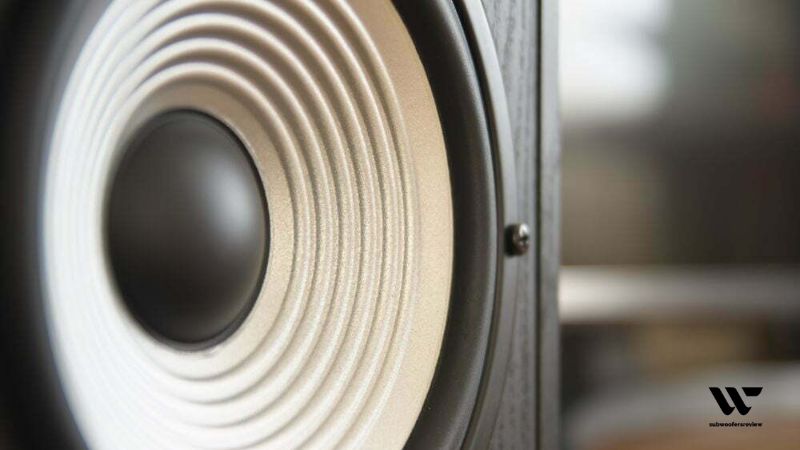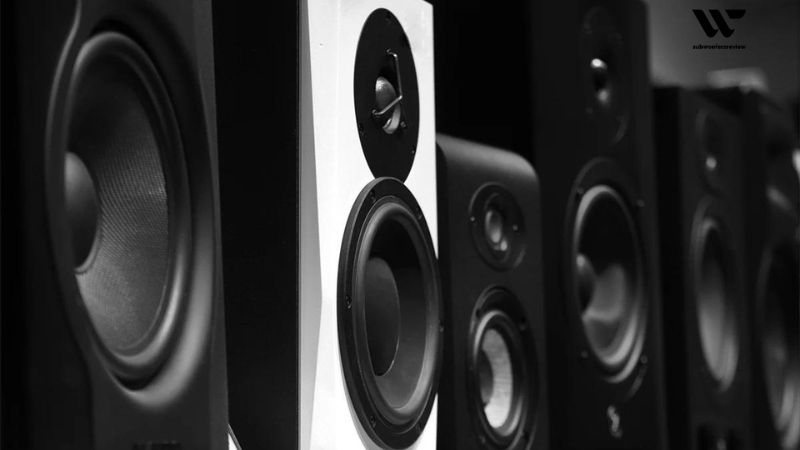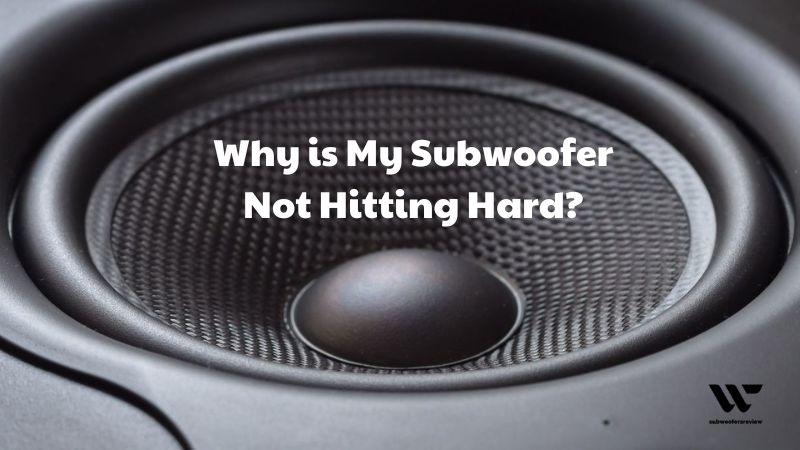Love Calculator
Are you tired of lackluster bass in your audio setup? Do you find yourself wondering why is my subwoofer not hitting hard? If you’re experiencing bass woes and seeking answers, then this blog is for you. In this article, we will delve into the common issues that can cause subwoofers to underperform and explore troubleshooting techniques to help you achieve that powerful, chest-thumping bass you desire. So, buckle up and get ready to dive into the world of subwoofer troubleshooting!
In order to produce low-frequency sounds, a subwoofer is needed. These improve the overall sound quality and give the bass a richer character. When low frequency sound is present in the audio, subwoofers only function; otherwise, they are mute. If your subwoofer isn’t hitting strongly enough, there may be a number of causes. So, why is my subwoofer not hitting hard?
Why is My Subwoofer Not Hitting Hard?
Your subwoofer might no longer absorb a bump as forcefully as it once did for a variety of reasons, including:
The subwoofer needs a lot of power to produce powerful bass, which is what insufficient power refers to. The appropriate degree of bass strength could be difficult to achieve if your subwoofer is coupled with a low-power amplifier. In order for the amplifier to meet the subwoofer’s power requirements, it must be powerful enough.
Weak Amplifier: The subwoofer’s amplifier is in charge of delivering sufficient power. You might not be able to get enough power to the subwoofer to produce powerful bass if your amplifier is weak, works at a higher impedance, or has a low output power.
Bass cancellation can occur when the output of the subwoofer interferes with that of other speakers in the system or with incorrect phase and polarity settings. A weaker bass impact results as a result of certain frequencies being cancelled out. Check to see that the polarity and phase of the subwoofer are set in accordance with the manufacturer’s recommendations.
Crossover setup: The crossover frequency decides which frequencies go to the subwoofer and which frequencies are handled by the main speakers. A weak impact could occur if the crossover is set too high since the subwoofer might have trouble reproducing the mid-bass frequencies. Change cross parameters as necessary.
Content of below-average quality: The subwoofer’s impact can be considerably influenced by the audio content being played. Low-quality audio files might not have the necessary depth and dynamics to interact with the subwoofer in a full way. Select audio sources of a high caliber that will make the most of the subwoofer’s capabilities.

Unsecured or improperly connected wiring is another potential reason for malfunctioning equipment or connections. This can result in the subwoofer’s inability to properly receive the signal, leading to this error. It may be difficult for the subwoofer to deliver a powerful blow if the wire connecting it to the amplifier is frayed or loose.
Subwoofer settings that aren’t complete: Many subwoofers include a range of options, including crossover frequency, gain, and phase. The subwoofer’s performance could be impacted by incorrectly specified settings. To set these parameters correctly and maximize the subwoofer’s output, consult the owner’s manual.
Reduce the bass: As a beginner, you might not only turn up the bass but also think it’s overkill. However, there will be less bass if you lower the bass volume. The subwoofer can’t hit forcefully as a result. A separate subwoofer volume control may be available on the remote for some audio systems, so keep that in mind. You can adjust the bass in your sound system.
Acoustics of the room: The subwoofer’s sound can be impacted by the way the room is constructed. This is due to the fact that room acoustics, in the opinion of audio-video professionals, are the most crucial element in any audio-video system. If the room is not set up for proper acoustics, a subwoofer may not be able to produce enough bass.
Absence of rest: Subwoofers, like any mechanical equipment, need to rest in order to work at their best. You might not be immediately impressed by the new subwoofer. To boost bass response, give the subwoofer some time to “attack” and loosen up.
Misplacement: The subwoofer’s performance is significantly impacted by where it is placed in the room. The speaker may provide a dull sound if it is placed in a corner or up against a wall because of the extreme bass buildup. However, positioning it in the center of the space may result in a lack of bass effect. Try out various locations to choose the one that balances bass response the best.
Problems with the motor can lead to a weak subwoofer, albeit this is not very common. The engine could sustain damage from a fuse or battery explosion. Check to determine if the engine is working normally if you are certain that it is not one of the explanations listed above.
Subwoofer is of low quality: A subwoofer that is poorly manufactured will not be able to create sound with the same quality as one that is of great quality. This may be as a result of the subwoofer’s design or the materials used to construct it. The subwoofer won’t be able to create the same sound quality if it isn’t up to par.

Tips to Ensure Your Subwoofer Hits Hard
Design of a suitable enclosure
Make sure the appropriate enclosure type is used to install your subwoofer. The ported box produces louder, more booming bass than the sealed box, which gives precision. Select a speaker enclosure that is appropriate for your vehicle or home setting as well as musical tastes.
Size of the enclosure precisely
The subwoofer enclosure’s (box’s) dimensions must be in accordance with those of the subwoofer. The performance of the subwoofer might be impacted by incorrect box measurements. Consult the recommended subwoofer cabinet size from the manufacturer.
Ajust the EQ
Increasing the bass response with EQ adjustment is your first approach in this situation. Although some subwoofers feature an EQ setting that can be adjusted, you should often look for a receiver, preamp, or equalization that is freestanding.
If the poor signal issue is resolved by increasing the bass while the subwoofer is playing, adjust the EQ and check it out. Do not forget to test any EQs you might employ because there may be several EQs on the signal chain path. Regarding output volume level, the same issue occurs.
Verify compatibility
Amperage, power output, and other factors are specific to subwoofers. Verify that the subwoofer works in harmony with the rest of the system, including the stereo speakers, audio sources, preamps, receivers, and everything else you have attached.
Swapping of cables
Weak subwoofers are frequently caused by malfunctioning power cords and connection cables. Try switching out all the cords to see if that fixes the issue. Make it a practice to keep lots of extra power cords and connection cables on hand because damaged cables can cause a variety of issues.
Wrapping Up
In conclusion, troubleshooting bass issues with your subwoofer requires a systematic approach to identify and resolve the problem. By checking the connections, adjusting settings, and ensuring proper power supply, you can address common issues such as improper placement, incorrect audio settings, or a faulty subwoofer. Additionally, it is important to consider the room acoustics and the quality of the audio source being played. By following these steps, you can optimize the performance of your subwoofer and enjoy a more immersive and powerful bass experience.

